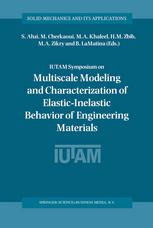

Most ebook files are in PDF format, so you can easily read them using various software such as Foxit Reader or directly on the Google Chrome browser.
Some ebook files are released by publishers in other formats such as .awz, .mobi, .epub, .fb2, etc. You may need to install specific software to read these formats on mobile/PC, such as Calibre.
Please read the tutorial at this link: https://ebookbell.com/faq
We offer FREE conversion to the popular formats you request; however, this may take some time. Therefore, right after payment, please email us, and we will try to provide the service as quickly as possible.
For some exceptional file formats or broken links (if any), please refrain from opening any disputes. Instead, email us first, and we will try to assist within a maximum of 6 hours.
EbookBell Team

5.0
60 reviewsThe papers in this proceeding are a collection of the works presented at the IUTAM symposium-Marrakech 2002 (October 20-25) which brought together scientists from various countries. These papers cover contemporary topics in multiscale modeling and characterization of materials behavior of engineering materials. They were selected to focus on topics related to deformation and failure in metals, alloys, intermetallics and polymers including: experimental techniques, deformation and failure mechanisms, dislocation-based modelling, microscopic-macroscopic averaging schemes, application to forming processes and to phase transformation, localization and failure phenomena, and computational advances. Key areas that are covered by some of the papers include modeling of material deformation at various scales. At the atomistic scale, results from MD simulations pertaining to deformation mechanisms in nano-crystalline materials as well as dislocation-defect interactions are presented. Advances in modeling of deformation in metals using discrete dislocation analyses are also presented, providing an insight into this emerging scientific technique that can be used to model deformation at the microscale. These papers address current engineering problems, including deformation of thin fIlms, dislocation behavior and strength during nanoindentation, strength in metal matrix composites, dislocation-crack interaction, development of textures in polycrystals, and problems involving twining and shape memory behavior. On Behalf of the organizing committee, I would like to thank Professor P.